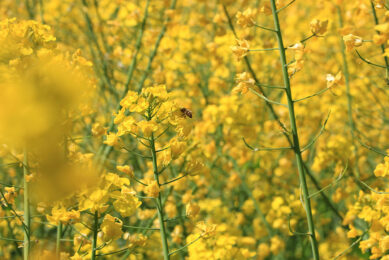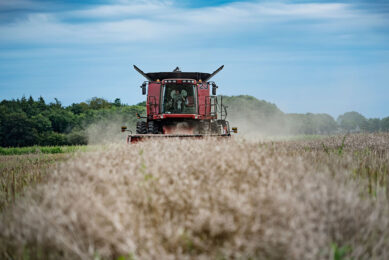Strong demand tightens EU rapeseed market
Europe’s rapeseed market is to be squeezed by falling production and growing demand from crushers, leaving the market nearly as tight as they were when prices soared above €500 a tonne, according to an analysis by Agrimoney.
While farmers are raising plantings by 400,000 hectares for this year’s harvest, the crop will – assuming average yields – fall short of last year’s record 21.4m tonnes, a report from US Department of Agriculture staff across the European Union said.
However, demand from processors for rapeseed will rise in 2010-11, boosted by growing demand for rapeseed oil to convert into biodiesel and the increasing popularity of rapeseed meal as an animal feed.
EU rapeseed forecasts 2010-2011 (yoy change)
Area harvested | 6.90 million hectares | +6.2% |
Production | 21.1 million tonnes | -1.4% |
Imports | 2.80 million tones | +12% |
Exports | 140,000 tones | +5.3% |
Crush | 23.45 million tonnes | +0.6% |
Total consumption | 23.95 million tonnes | +0.6% |
Year end stocks | 1.22 million tonnes | -13.5% |
Source: USDA attaché report
‘Reducing stock levels’
EU rapeseed production will fall nearly 2.9m tonnes short of consumption, a deficit 500,000 tonnes bigger than that in 2009-10.
A rise in imports will take up part of the difference, although crushers are being deterred from shipments from Canada, the world’s biggest exporter, for fear of contamination with genetically modified varieties, creating complications under Europe’s strict laws over biotech crops.
Separately, many observers have also raised doubts over the crop in Ukraine, a major supplier to Europe, because of winterkill.
The rest of the shortfall will be borne by "reducing stock levels", the USDA report said, pegging Europe’s inventories at the end of 2010-11 at 1.22m tones.
Plant fire
Rapeseed prices subsequently fell to a low of €244.00 a tonne last summer, before beginning a revival back above €300 a tonne, spurred by the tightening market and firm prices of soybeans, the rival oilseed.
A fire at Bunge’s crushing plant in Mannheim a week ago will cut crushing demand by some 250,000 tonnes, largely in 2009-10, "and this can’t be seen as bullish", analysts say.
Source: Agrimoney











